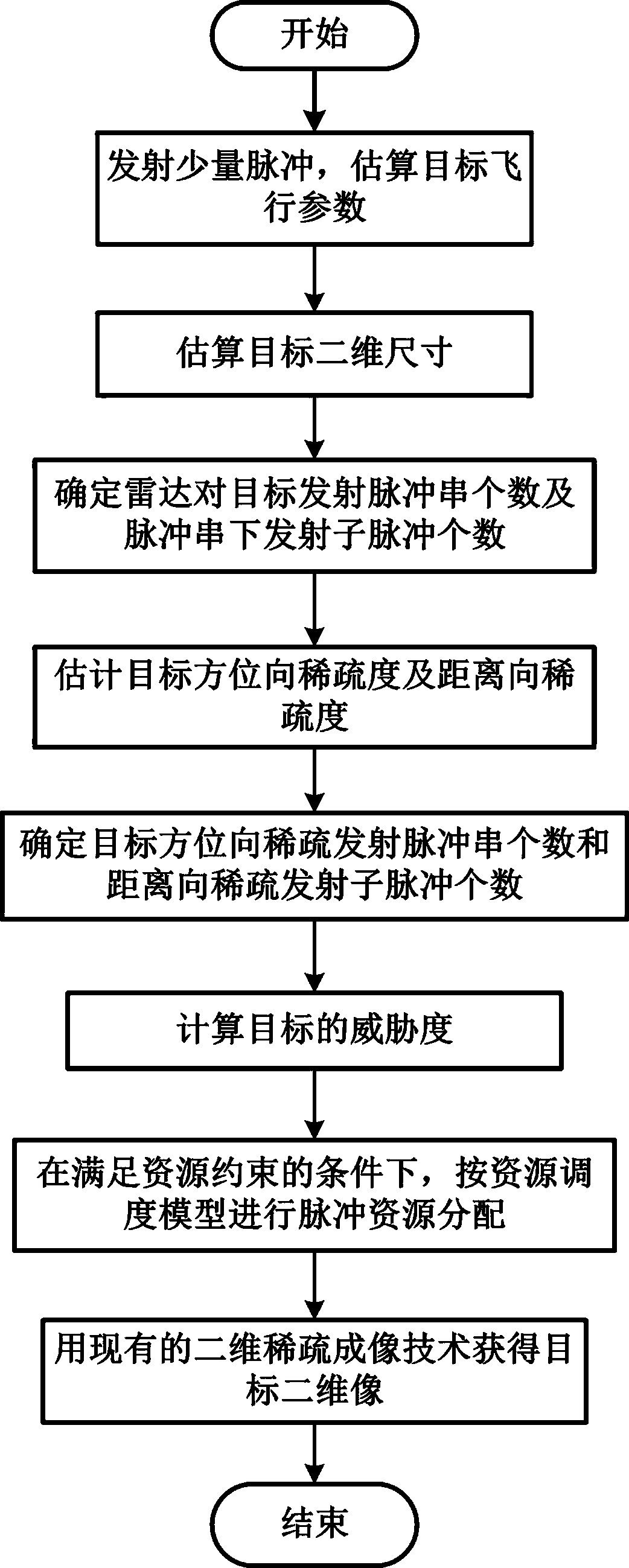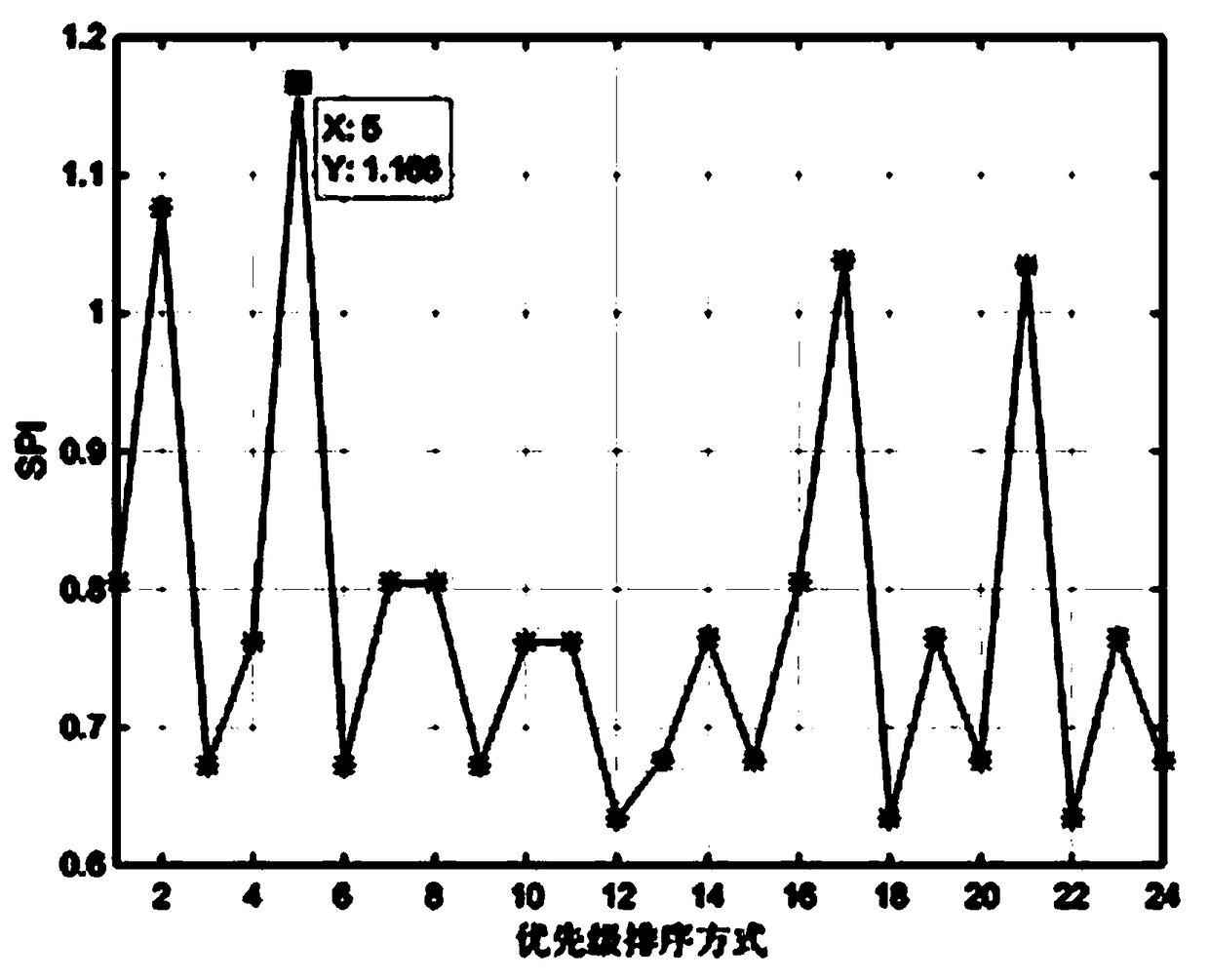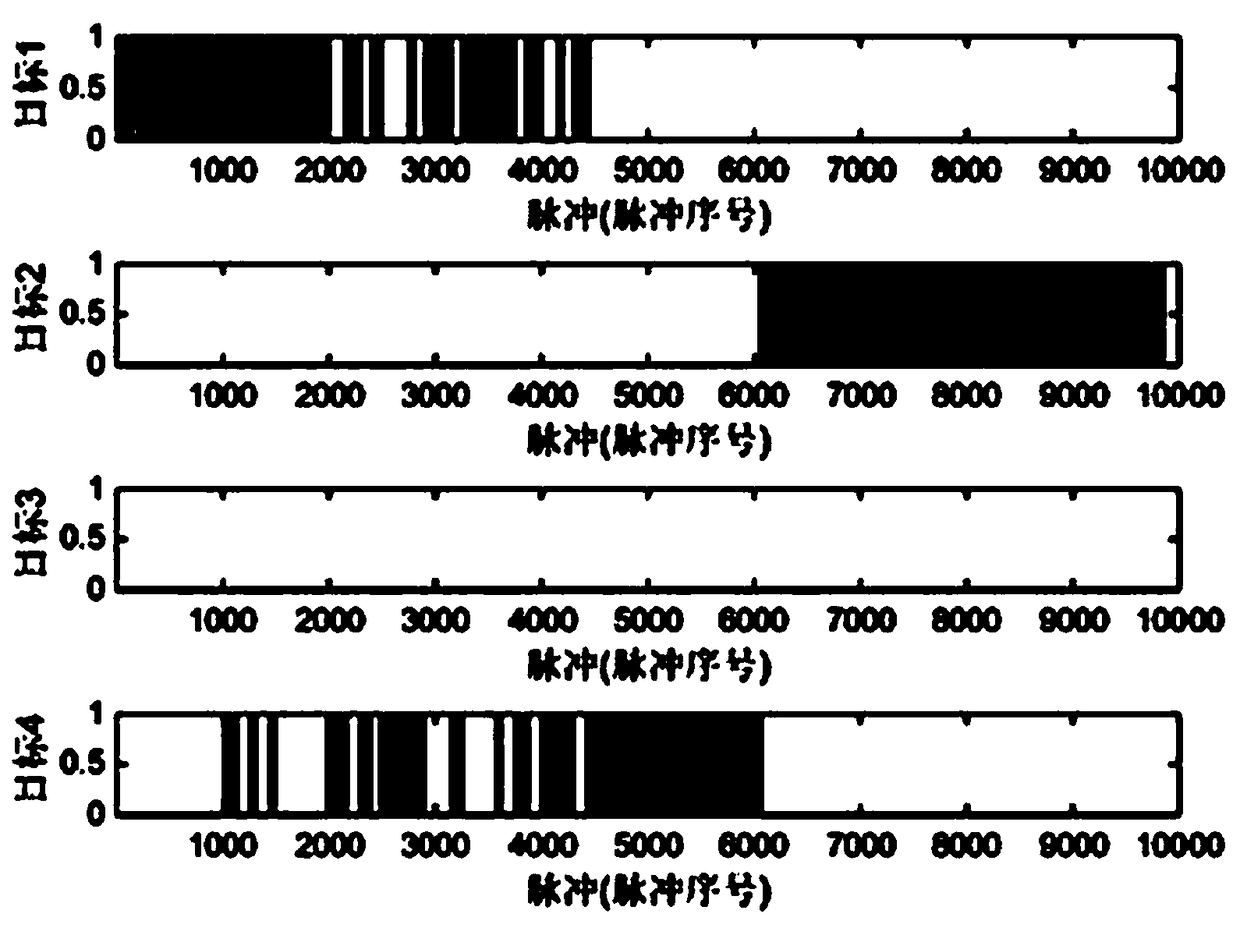Resource self-adaptive scheduling method for inverse synthetic aperture radar two-dimensional sparse imaging
An inverse synthetic aperture and sparse imaging technology, which is applied in the direction of radio wave reflection/re-radiation, utilization of re-radiation, and measurement devices, can solve problems such as lack of overall system performance and insufficient utilization of radar resources, and improve overall performance. , The effect of saving radar resources
- Summary
- Abstract
- Description
- Claims
- Application Information
AI Technical Summary
Problems solved by technology
Method used
Image
Examples
Embodiment
[0079] Set the scheduling interval as T=1s, and the sub-pulse repetition frequency as F PRF =10kHz, then the total number of sub-pulses in the scheduling interval: P totall =T×F PRF =10000, suppose there are N in the scheduling interval T totall A target applies for an imaging task.
[0080] figure 1 A resource adaptive scheduling method for two-dimensional sparse imaging of inverse synthetic aperture radar is shown. On the basis of the radar's feature recognition of each target, the pulse resource demand of each target is calculated, and then according to the constraints selected by the radar Conditions determine the sub-pulse emission position that needs to be allocated for each target, and obtain echoes through alternate observation of the target, so as to complete the inverse synthetic aperture imaging task for multiple targets, including the following steps:
[0081] (1) The radar emits a small number of pulses to each target to estimate the flight parameters of the t...
PUM
 Login to View More
Login to View More Abstract
Description
Claims
Application Information
 Login to View More
Login to View More - R&D
- Intellectual Property
- Life Sciences
- Materials
- Tech Scout
- Unparalleled Data Quality
- Higher Quality Content
- 60% Fewer Hallucinations
Browse by: Latest US Patents, China's latest patents, Technical Efficacy Thesaurus, Application Domain, Technology Topic, Popular Technical Reports.
© 2025 PatSnap. All rights reserved.Legal|Privacy policy|Modern Slavery Act Transparency Statement|Sitemap|About US| Contact US: help@patsnap.com



